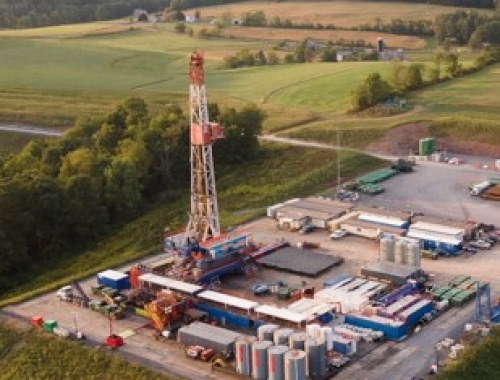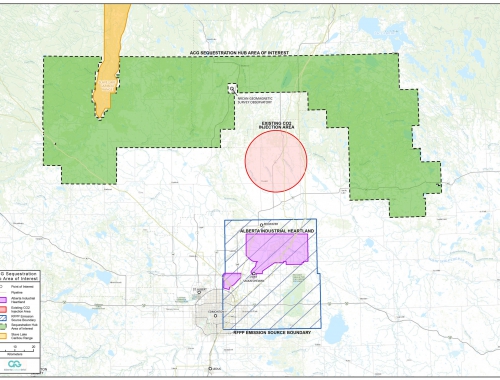Next Level Natural Gas
SUMMARY
In North America, and increasingly in Europe, initiatives are underway to improve the sustainability of natural gas production and consumption.
By Dale LunanPOSTED IN:
Natural gas has been a mainstay of the North American energy mix for more than a century. Today, natural gas meets a growing share of the energy we consume. This continued growth is anchored by an industry that is investing in technology solutions across the entire value chain to ensure natural gas, and new low emission gases, remain an affordable, reliable and secure source of energy for the world.
A major theme of the International Gas Union’s International Gas Research Conference 2024 (IGRC2024) in Banff next year will be Natural Gas 2.0 which will encapsulate the latest innovations, technological developments and leading practices in the areas of production, delivery and utilization.
Much of this innovation is taking place in Canada and the US, where efforts are underway to further improve the low emission qualities of natural gas by integrating hydrogen and renewable natural gas into distribution systems, supporting new end use heating technologies and methane detection and mitigation solutions.
Certification Taking Hold
The industry is working with certification platforms that are driving next generation clean gas molecules. The most visible certification services are MiQ and Equitable Origin. MiQ says it has certified 17% of North American natural gas production, while Equitable Origin says 12% of North American gas production carries its certification label.
Launched by RMI and Systemiq in December 2020, the MiQ initiative works by certifying gas supply based on its methane intensity and how frequently and effectively operators inspect their facilities, as well as the company practices they have introduced.
Equitable Origin’s EO100™ Standard for Responsible Energy Development measures natural gas production against five principles: corporate governance, transparency and ethics; human rights, social impact and community development; indigenous peoples’ rights; fair labour and working conditions and climate change, biodiversity and environment.
Low emitting LNG
Industry is also working to increase transparency around lowering emissions across the LNG value chain, from reducing emissions from upstream production to monitoring and verifying emissions during liquefaction and transport.
Cheniere Energy pioneered the use of cargo emission tags to outline emissions associated with its exported LNG cargoes, while earlier this year Shell Eastern LNG delivered a greenhouse gas (GHG) neutral LNG cargo from Australia’s Gorgon project to Taiwan’s CPC using a framework set up by the International Group of Liquefied Natural Gas Importers.
In the liquefaction space, Technip Energies has launched its SnapLNG by T.EN technology, a modular, pre-engineered and standardised solution for decarbonised LNG production.
SnapLNG by T.EN is a 2.5mn tonnes/year electrically driven solution comprised of reproducible modules. These modules operate autonomously and are pre-commissioned, for the delivery of a complete natural gas liquefaction plant that helps reduce CO2 emissions by about 350,000 tonnes/train versus a standard gas turbine solution.
Leveraging Pipes for Low Emission Gases
Renewable natural gas (RNG) produced from landfill methane and waste decomposition, is also gaining traction across North America as a tool to lower emissions of the natural gas that consumers use in their home and businesses.
Both FortisBC and Enbridge are actively involved in RNG developments, with goals to include RNG in up to 15% or more of their distributed supplies.
But it doesn’t stop there. FortisBC is working with McDonald’s Canada to fuel the fast-food company’s supply chain fleet with compressed RNG, while Enbridge is working with the Ontario Waste Management Association in a province-wide pilot project to use RNG to fuel waste collection vehicles.
Also in the transportation realm, Tourmaline Oil, Canada’s largest natural gas producer, is working with California’s Clean Energy Fuels, the largest supplier of compressed natural gas (CNG) to the trucking industry, to build out a system of 20 CNG stations in western Canada to help heavy duty truck fleets convert to lower-carbon CNG from diesel fuel.
Tourmaline will supply the natural gas, CEF will operate the stations and Mullen Group, one of North America’s largest logistics companies, has indicated its support as an early adopter and expects to use the network of stations to fuel its growing fleet of CNG-powered trucks.
As many as 3,000 natural gas-powered trucks could be fueled using CNG every day, resulting in a reduction of approximately 72,800 tonnes/year of CO2-equivalent.
In northern Canada, the Inuvialuit Energy Security Project (IESP) would revive production from a natural gas well near Tuktoyaktuk to provide CNG and feedstock for the production of propane and synthetic diesel to serve local markets.
Cummins, a world leader in transportation and stationary power generation engines, is developing its X15 heavy-duty transportation engine capable of running on CNG or LNG.
And in Europe, Chart Industries is collaborating with Sweden’s Scania and Spanish coachbuilder Irizar on the development of the largest version yet of Irizar’s LNG-fueled coach. Each of the coaches emit 25% less CO2 and 85% less NOx than their diesel counterparts and offer ranges comparable to diesel-fueled versions.
Leading on Methane Management
Alongside initiatives to reduce emissions of natural gas distribution streams and transportation, the gas industry is actively reducing methane emissions.
In the utility and pipeline business, companies have been implementing leak detection and repair programs that allow them to pinpoint and fix leaks quickly and more efficiently. The industry is also continuing to work with contractors and other earth works companies to ensure all pipeline locates are found before any digging occurs.
Many companies are advancing new methane capture technologies that collect and reuse what was once vented methane from pipeline operations. Further, new innovative systems are being brought to market that allow for better measurement of leaks and their origins.
In the upstream production business, some companies are looking at how they deepen the use of electricity for their operations. Key to reducing those emissions is the electrification of natural gas infrastructure, from field production and processing facilities to pipelines and liquefaction terminals.
In BC’s Montney field, many gas processing facilities, including those operated by LNG Canada lead partner Shell, are electrified, while the BC government recently announced financial support for other field electrification plans, including by ARC Resources, Tourmaline Oil and others.
In Norway, work is underway to connect Hammerfest LNG, western Europe’s largest natural gas liquefaction complex, to the national power grid, eliminating 850,000 tonnes/year of CO2 emissions, while in the UK, a study carried out by government-supported Net Zero Technology Centre (NZTC) and Cygnus gas field partners Neptune Energy and Spirit Energy has identified four options to electrify North Sea oil and gas platforms.




